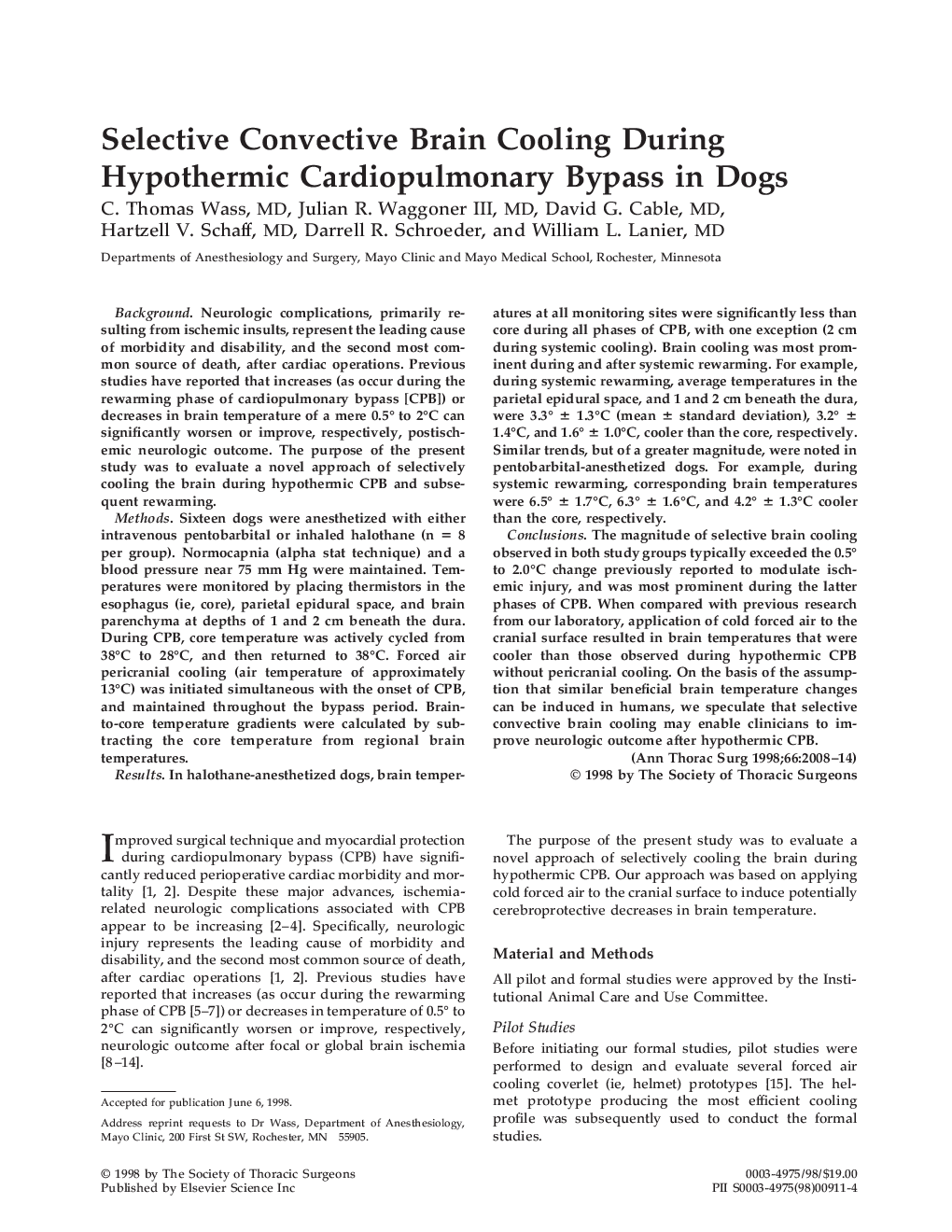| Article ID | Journal | Published Year | Pages | File Type |
|---|---|---|---|---|
| 2885502 | The Annals of Thoracic Surgery | 2014 | 7 Pages |
Abstract
Conclusions. The magnitude of selective brain cooling observed in both study groups typically exceeded the 0.5° to 2.0°C change previously reported to modulate ischemic injury, and was most prominent during the latter phases of CPB. When compared with previous research from our laboratory, application of cold forced air to the cranial surface resulted in brain temperatures that were cooler than those observed during hypothermic CPB without pericranial cooling. On the basis of the assumption that similar beneficial brain temperature changes can be induced in humans, we speculate that selective convective brain cooling may enable clinicians to improve neurologic outcome after hypothermic CPB.
Related Topics
Health Sciences
Medicine and Dentistry
Cardiology and Cardiovascular Medicine
Authors
C.Thomas MD, Julian R MD, David G MD, Hartzell V MD, Darrell R Schroeder, William L MD,
